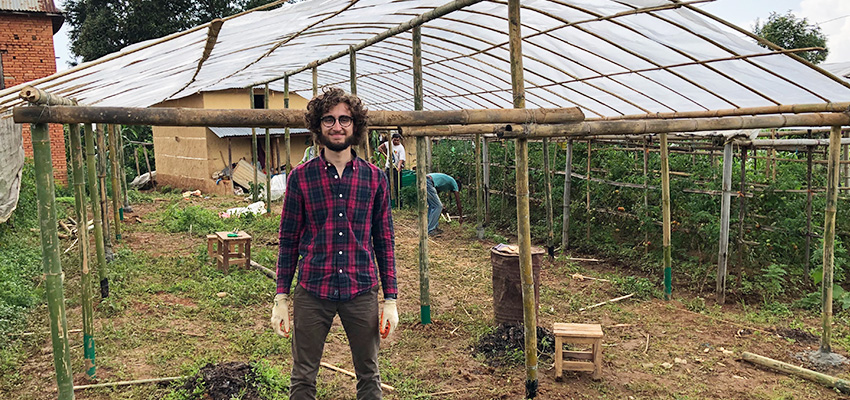
I’d not stepped on to a farm for over ten years before coming to MIT, and now I found myself flying halfway around the world to work on a farm in the mountains of the Kathmandu Valley in Nepal. Earlier this year at MIT, I took the class D-Lab: Smallholder Agriculture, taught by D-Lab Executive Director Bob Nanes and longtime instructor Gwyn Jones. The class required students to develop a project in teams or as individuals related to smallholder farmers in the developing world. Bob, and Robert Powell (Harvard '21), a fellow student in the class, would later join me in Nepal supporting my project.
My project began as an investigation of the challenges involved in high altitude farming, focussing specifically in the Andes, South America. After some research, I had found some demonstration farms at high altitudes in the US using greenhouses to grow crops, such as cucumber, that don’t typically grow so high. The greenhouse’s ability to manipulate the microclimate fascinated me, and I continued to search for a project related to greenhouse technology. Bob introduced me to some engineers at the organization IDE Nepal, who were working on low-cost bamboo greenhouses for use at high altitudes across Nepal. After discussion with the IDE Nepal team, I discovered that the farmers were reporting issues with greenhouse durability. I decided to focus on this for my project and designed a new modular greenhouse structure to improve the lifetimes of bamboo greenhouses. As the semester came to an end, the next step was to implement the project. Thus began the 7,000 miles of travel to Nepal, landing me in the bustling streets of Kathmandu.
Upon arrival, one is immediately struck by the concrete jungle that Kathmandu has become. Buildings cover every square inch of land (minus the space for roads which meander, however they can, through houses, schools, hospitals, and shops). The city seems chaotic: cars veer in and out of lanes, people stroll down the main highways, motorbikes fill every gap between cars. Yet in this chaos one can find structure, from an outside perspective it is difficult to appreciate the subtle traits of Kathmandu’s workings, but upon closer inspection, you observe a variety of details. Busy sections of highway, where cars move at walking pace, become hotspots for roadside markets, allowing merchants to sell drivers a variety of food goods. This informal market structure arose from the chaos, a trait unique to the city; but only an hour's drive from central Kathmandu, life is very different.
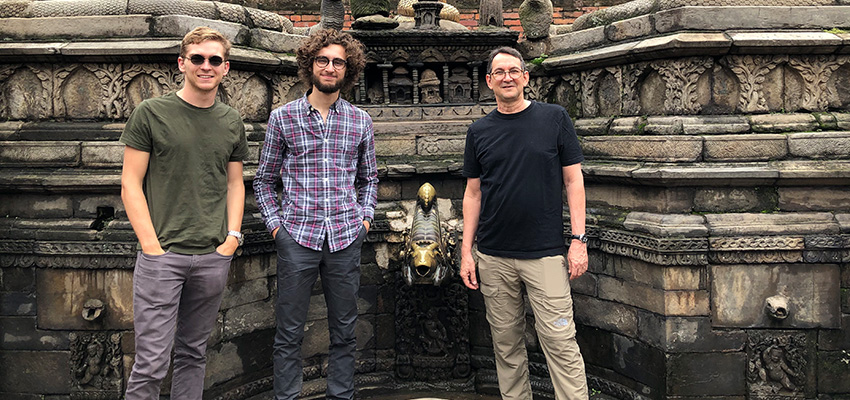
The hills surrounding Kathmandu valley are home to a plethora of farmers, growing a variety of crops from rice to tomatoes. The roads to these farms are difficult to drive: Kathmandu has seen a decline in its infrastructure over the past few years. In places, roads are obstructed by landslides, construction, or have simply disintegrated from intensive use. In addition, the pollution along these roads is often very high, posing a risk to those who frequent the route. Although the roads to these farmland areas were not easy to take, they were necessary for our work in Nepal.
Our first few days were spent discussing ideas with the IDE Nepal team, followed by field research. This research was pivotal to the project and shed new light on the issue at hand. After talking with four farmers in the town of Lele, we discovered that there was a pressing issue with their greenhouses. Each farmer described how the bamboo posts planted in the ground rotted. After around five years, following strong winds, these posts would break where the rotting occurred, causing the greenhouse to collapse. This story was consistent amongst the farmers, and when we returned to the IDE Nepal office we decided to pivot and develop a solution to prevent rotting. Our goal: to double the lifetime of the bamboo greenhouse from five to ten years. The following day we had an intense brainstorming session, proposing possible solutions to the bamboo rotting problem. After a long day of work, we landed on seven low-cost, implementable solutions. These solutions involved a variety of techniques: coatings including tar and paint, as well as one which made use of concrete; anything that prevented water contacting the bamboo was a potential solution.
It was decided that we would return to Lele to build a demonstration greenhouse for one of the farmers, where each of the posts in contact with the ground would be treated using a different technique. After the greenhouse was built, we would instruct IDE Nepal to perform yearly checks to document the effectiveness of each solution. These results would, in turn, be used to inform farmers of the best rot prevention techniques. Before beginning, we visited Kathmandu University, where we discussed bamboo preservation with a research team of biological engineers. The group had many solutions to preserve bamboo, most were chemical treatments. Considering our cost constraint, they endorsed the use of concrete with confidence and added that paint and tar would also be effective. With this support, we were confident to get to work constructing the greenhouse.
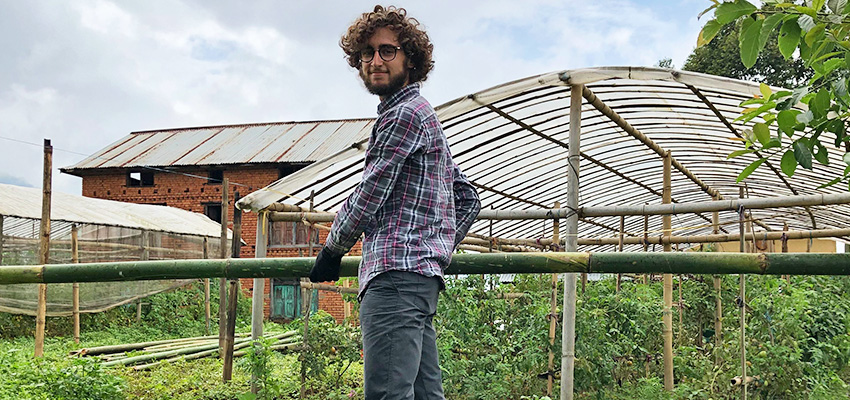
We gave ourselves three days to construct the greenhouse, with one additional day to collect and transport the materials from Kathmandu to Lele. We began on a rainy Sunday morning, at a bamboo shop in Satdobato, a town south of Kathmandu. After hauling 25 poles of bamboo onto the back of a truck, we drove to Lele where we dropped off the materials. The farmers offered us lunch, a spicy tomato dish with chapati bread. After eating we headed back to Kathmandu, preparing for the following three days of construction. There would be a team of five other people helping with construction: Robert, Bob, two IDE Nepal staff (Krishna and Rita), Anthony Colavito from the University of Buffalo, and one of the farmers called Sanubai: a local craftsperson with priceless expertise in greenhouses.
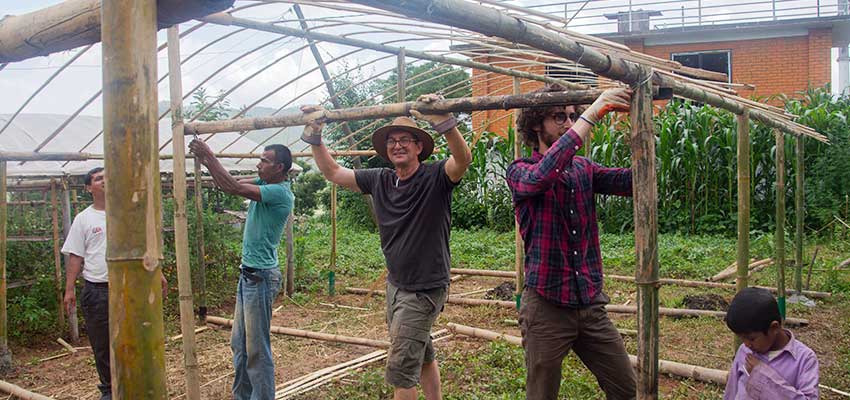
On Monday, day one, we cut and treated the ground poles. We had twenty-one poles to apply different solutions to, we assigned each pole a different solution, the frequency of each solution based on our confidence in it. With the poles treated, we were ready on day two to begin erecting the structure: first, the ground poles went in, followed by the cross beams, followed by the ridge board. By day three, all that was left was the rafters. Determined to get the greenhouse finished, we arrived early Wednesday morning and worked through late evening until the waterproof sheet had been draped and attached. The greenhouse was complete! Stepping back and admiring our completed greenhouse was incredibly fulfilling. The process had been challenging, you would be surprised by the amount of manual labor put into building a greenhouse, but enormously satisfying. After parting ways with Sanubai and his family, we made a final journey back down the mountain roads to Kathmandu where Bob, Robert, and I celebrated with some local Newari food.
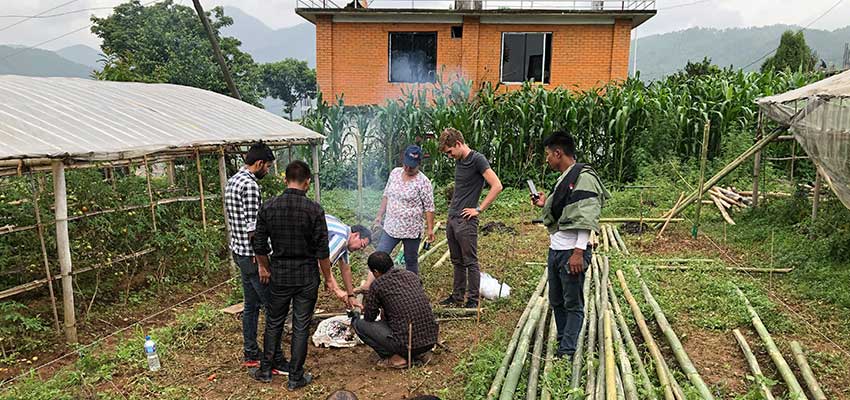
Reflecting on the project, I have gained great respect for the farmers and people who live in the Kathmandu valley. There is a challenge to finding comfort in this city that is growing at an incredible rate. Yet within such a place, individuals-, from farmers like Sanubai to doctors in the city- have found a rhythm that allows them not just to survive but to thrive. For farmers, that rhythm is founded on a dependence on the land. Making use of this land in the best way possible is made easier by a greenhouse- a simple technology but nevertheless an incredibly practical one. I hope this project has helped bring the Nepalese farmers one step closer to a life of comfort in their diverse, fast-moving, and incredible country.
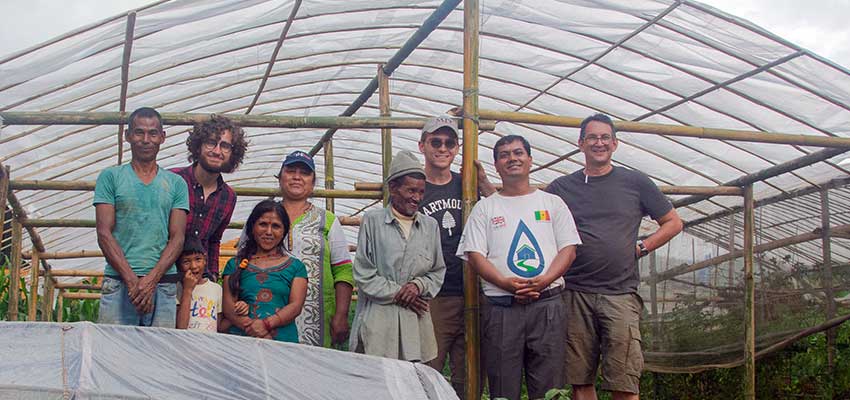
About the writer
Matthew Baldwin, a junior at MIT studying Physics and Mathematics, is originally from Britain. Matthew has worked at MIT’s Research Laboratory of Electronics, where he developed a quantum computing device; at a high school in Italy, teaching Physics; and at CERN in Switzerland, producing particle collision simulations to support the construction of a new particle collider.

